Java集合05¶
11.HashSet课堂练习¶
11.1课堂练习1¶
定义一个Employee类,该类包括:private成员属性name,age
要求:
- 创建3个Employee对象放入HashSet中
- 当name和age的值相同时,认为是相同员工,不能添加到HashSet集合中
思路:不同对象的哈希值一般会不一样,导致在添加对象时可能会在table数组的不同位置添加,因此想要比较对象的属性值,就要重写hashCode方法,使具有相同属性的对象具有一样的hash值,这样才能在插入时比较对象的值;但不同的对象也可能具有相同的hash值,所以要重写equals方法来比较对象属性值
如下图:在add()方法最终调用的putVal()方法中可以看出,如果插入的新元素的哈希值相同 且 值也相同 就不加入

例子:
package li.collections.set.hashset;
import java.util.HashSet;
import java.util.Objects;
@SuppressWarnings("all")
public class HashSetPractice {
public static void main(String[] args) {
HashSet hashSet = new HashSet();
hashSet.add(new Employee("jack", 18));
hashSet.add(new Employee("smith", 18));
hashSet.add(new Employee("jack", 18));
System.out.println(hashSet);//[Employee{name='smith', age=18.0}, Employee{name='jack', age=18.0}]
}
}
class Employee {
private String name;
private double age;
public Employee(String name, double age) {
this.name = name;
this.age = age;
}
public String getName() {
return name;
}
public void setName(String name) {
this.name = name;
}
public double getAge() {
return age;
}
public void setAge(double age) {
this.age = age;
}
@Override
public String toString() {
return "Employee{" +
"name='" + name + '\'' +
", age=" + age +
'}';
}
@Override
public boolean equals(Object o) {
if (this == o) return true;
if (o == null || getClass() != o.getClass()) return false;
Employee employee = (Employee) o;
return Double.compare(employee.age, age) == 0 && Objects.equals(name, employee.name);
}
@Override
public int hashCode() {
return Objects.hash(name, age);
}
}

快捷键:alt+insert选择equals()and hashCode()快速重写
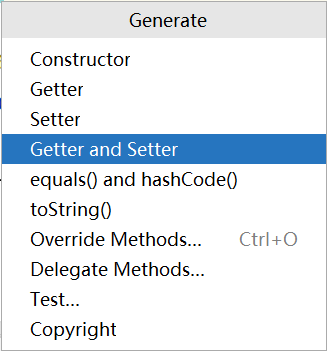
如果name和age的值相同,在使用equals时,返回true
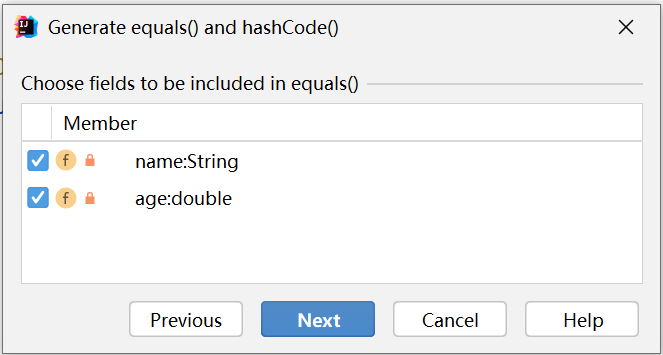
如果name和age的值相同,在计算hashCode的时候返回相同的hash值
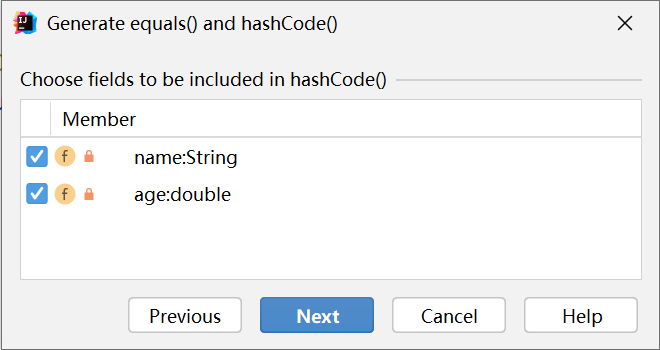
11.2课堂练习2¶
定义一个Employee类,该类包含:private成员属性name,sal,birthday,其中birthday为MyDate类型,属性包括year,month,day
要求:
- 创建3个Employee对象放入到HashSet中
- 当name和birthday的值相同时,认为是相同员工,不能添加到HashSet集合中
思路:和练习1思路一致,不同的是MyDate类也要重写equals()和hashCode()方法
练习:
package li.collections.set.hashset;
import java.util.HashSet;
import java.util.Objects;
@SuppressWarnings("all")
public class HashSetPractice2 {
public static void main(String[] args) {
HashSet hashSet = new HashSet();
hashSet.add(new Employee("jack",8000,new MyDate(1997,12,23)));
hashSet.add(new Employee("jack",8000,new MyDate(1997,12,23)));
hashSet.add(new Employee("jack",8000,new MyDate(1997,12,23)));
hashSet.add(new Employee("jack",8000,new MyDate(1997,12,23)));
System.out.println(hashSet);//[Employee{name='jack', sal=8000.0, birthday=MyDate{year=1997, month=12, day=23}}]
}
}
class Employee {
private String name;
private double sal;
private MyDate birthday;
public Employee(String name, double sal, MyDate birthday) {
this.name = name;
this.sal = sal;
this.birthday = birthday;
}
public String getName() {
return name;
}
public void setName(String name) {
this.name = name;
}
public double getSal() {
return sal;
}
public void setSal(double sal) {
this.sal = sal;
}
public MyDate getBirthday() {
return birthday;
}
public void setBirthday(MyDate birthday) {
this.birthday = birthday;
}
@Override
public boolean equals(Object o) {
if (this == o) return true;
if (o == null || getClass() != o.getClass()) return false;
Employee employee = (Employee) o;
return Double.compare(employee.sal, sal) == 0 && Objects.equals(name, employee.name) && Objects.equals(birthday, employee.birthday);
}
@Override
public int hashCode() {
return Objects.hash(name, sal, birthday);
}
@Override
public String toString() {
return "Employee{" +
"name='" + name + '\'' +
", sal=" + sal +
", birthday=" + birthday +
'}';
}
}
class MyDate {
private int year;
private int month;
private int day;
public MyDate(int year, int month, int day) {
this.year = year;
this.month = month;
this.day = day;
}
public int getYear() {
return year;
}
public void setYear(int year) {
this.year = year;
}
public int getMonth() {
return month;
}
public void setMonth(int month) {
this.month = month;
}
public int getDay() {
return day;
}
public void setDay(int day) {
this.day = day;
}
@Override
public boolean equals(Object o) {
if (this == o) return true;
if (o == null || getClass() != o.getClass()) return false;
MyDate myDate = (MyDate) o;
return year == myDate.year && month == myDate.month && day == myDate.day;
}
@Override
public int hashCode() {
return Objects.hash(year, month, day);
}
@Override
public String toString() {
return "MyDate{" +
"year=" + year +
", month=" + month +
", day=" + day +
'}';
}
}

12.LinkedHashSet¶
12.1LinkedHashSet底层¶
- LinkedHashSet是HashSet的子类
- LinkedHashSet底层是一个LinkedHashMap(LinkedHashMap是HashMap的子类),底层维护了一个 数组+双向链表
- LinkedHashSet根据元素的hashCode值来决定元素的存储位置,同时使用链表维护元素的次序,这使元素看起来是以插入顺序保存的
- LinkedHashSet不允许重复元素
说明:
1)在LinkedHashSet中维护了一个hash表和双向链表(LinkedHashSet中有head和tail)
2)每一个节点都有前后指针(before和after属性),形成双向链表
3)在添加一个元素时,先求hash值,再求索引。确定该元素在table的位置然后将添加的元素加入到双向链表(如果已经存在,就不添加,原理和HashSet一样)
tail.next = newElement;//将新添加的节点连接至尾节点的后面
newElement.pre = tail;//将尾节点设为新结点的前驱结点
tail = newElement;//将新节点设为尾节点
4)这样,遍历LinkedHashSet也能确保插入顺序和遍历顺序一致
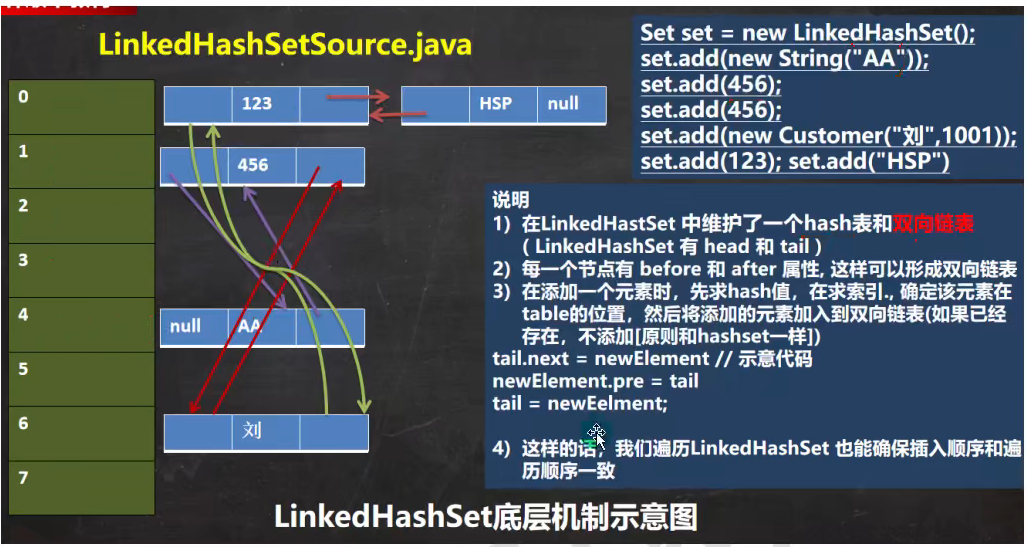
例子1:LinkedHashSet底层分析
package li.collections.set.hashset;
import java.util.LinkedHashSet;
import java.util.Set;
@SuppressWarnings("all")
public class LinkedHashSetSource {
public static void main(String[] args) {
Set set = new LinkedHashSet();
set.add(new String("AA"));
set.add(456);
set.add(456);
set.add(new Customer("刘", 1001));
set.add(123);
set.add("jack");
System.out.println(set);
}
}
class Customer {
private String name;
private int number;
public Customer(String name, int number) {
this.name = name;
this.number = number;
}
@Override
public String toString() {
return "Customer{" +
"name='" + name + '\'' +
", number=" + number +
'}';
}
}
如下图,LinkedHashSet不允许重复值,且插入顺序和取出顺序一致

在Set set = new LinkedHashSet();出打上断点调试:
如下图:可以看到,LinkedHashSet底层是一个LinkedHashMap

如下图所示:点击map展开,Step Over之后可以看到**第一次添加数据时,直接将数组table扩容到16(数组下标从零开始)**,存放的节点类型是LinkedHashMap$Entry
数组是HashMap$Node[ ]
存放的元素/数据是LinkedHashMap$Entry类型(LinkedHashMap的内部类Entry继承了HashMap的内部类Node)

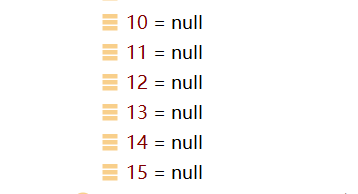

如下图:继续添加数据,可以看到在索引为8 的位置添加了新的数据456,点开索引为0 的节点,可以看到这时原来节点的after指向了新的节点,并且新结点的before指向了原来的节点,形成了双向链表

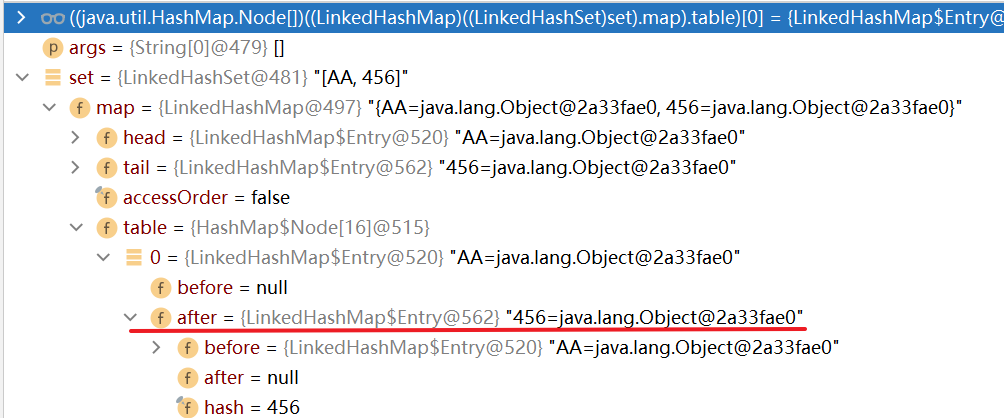
如下图所示:在add()底层仍然是和HashSet调用了相同的方法,详情见10.3HashSet源码详解



以此类推,形成一条双向链表:

12.1.LinkedHashSet练习¶
有一个Car类,存在两个私有属性name和price
要求:如果两个Car对象的name和price一样,就认为是相同元素,不能添加
练习:
package li.collections.set.hashset;
import java.util.LinkedHashSet;
import java.util.Objects;
@SuppressWarnings("all")
public class LinkedHashSetPractice {
public static void main(String[] args) {
LinkedHashSet linkedHashSet = new LinkedHashSet();
linkedHashSet.add(new Car("奥拓",100_000));
linkedHashSet.add(new Car("保时捷",990_000));
linkedHashSet.add(new Car("法拉利",3100_000));
linkedHashSet.add(new Car("特斯拉",100_000));
linkedHashSet.add(new Car("特斯拉",100_000));
for (Object o:linkedHashSet) {
System.out.println(o);
}
}
}
class Car{
private String name;
private double price;
public Car(String name, double price) {
this.name = name;
this.price = price;
}
@Override
public String toString() {
return "Car{" +
"name='" + name + '\'' +
", price=" + price +
'}';
}
@Override
public boolean equals(Object o) {
if (this == o) return true;
if (o == null || getClass() != o.getClass()) return false;
Car car = (Car) o;
return Double.compare(car.price, price) == 0 && Objects.equals(name, car.name);
}
@Override
public int hashCode() {
return Objects.hash(name, price);
}
}

在没有重写hashCode()和equals()之前不同的对象实例的hash值一般是不一样的,因此可以插入name和price相同的对象数据。重写之后可以看到相同属性的对象无法插入了。具体解题思路和11HashSet的课堂练习一致。